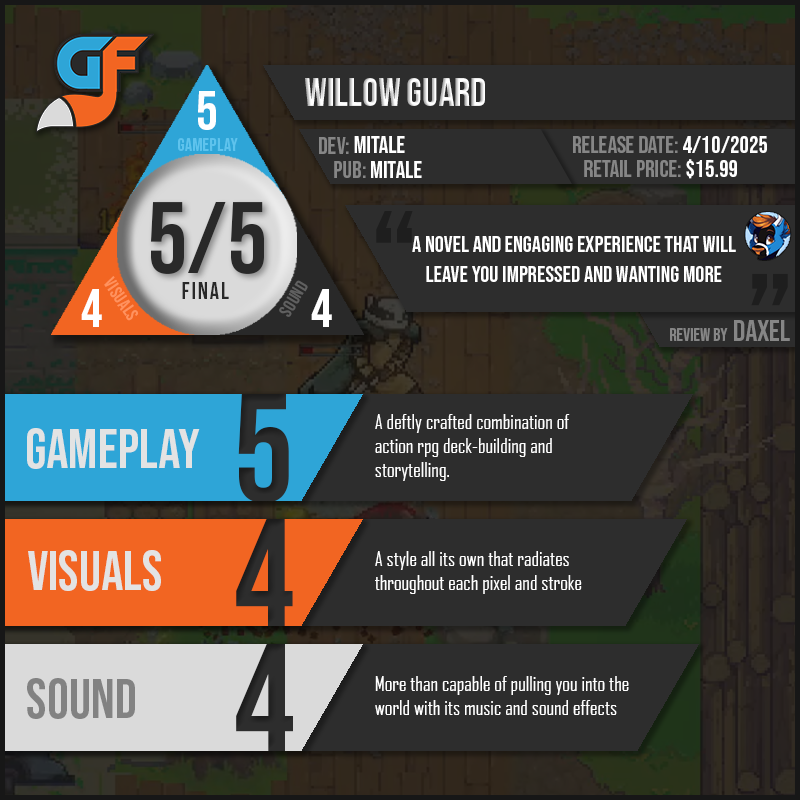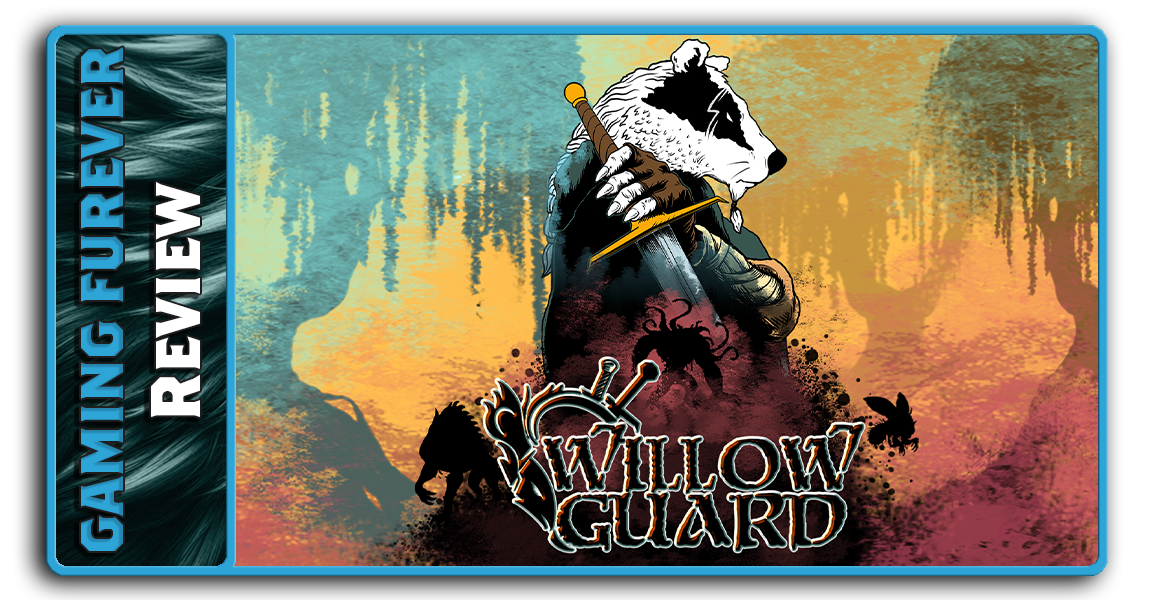Engaging storytelling devices paired with inventive spins on tried-and-true gameplay define Willow Guard, a new anthro character filled Medieval RPG by developer MiTale. You play as Ghweros, a badger “Willowguard” that is investigating a series of monster attacks on a remote village in the Northern Hinterlands. As you proceed through the game, you’ll build a deck of cards, a batch of clues, and a bunch of interpersonal relationships to try and help those in need that have been affected by the various afflictions that have arisen with the monsters’ arrival. The core of the gameplay is the ability to use skills within combat dungeon explorations, allowing you to hack, slash, spell cast, and defend your way through increasingly difficult situations and creatures. This gameplay loop of going between well-scripted, interactive investigative dialogue scenes of story content and then skillful isometric action segments is tightly constructed and easy to get wrapped up in; like an engrossing “Choose Your Own Adventure” book.
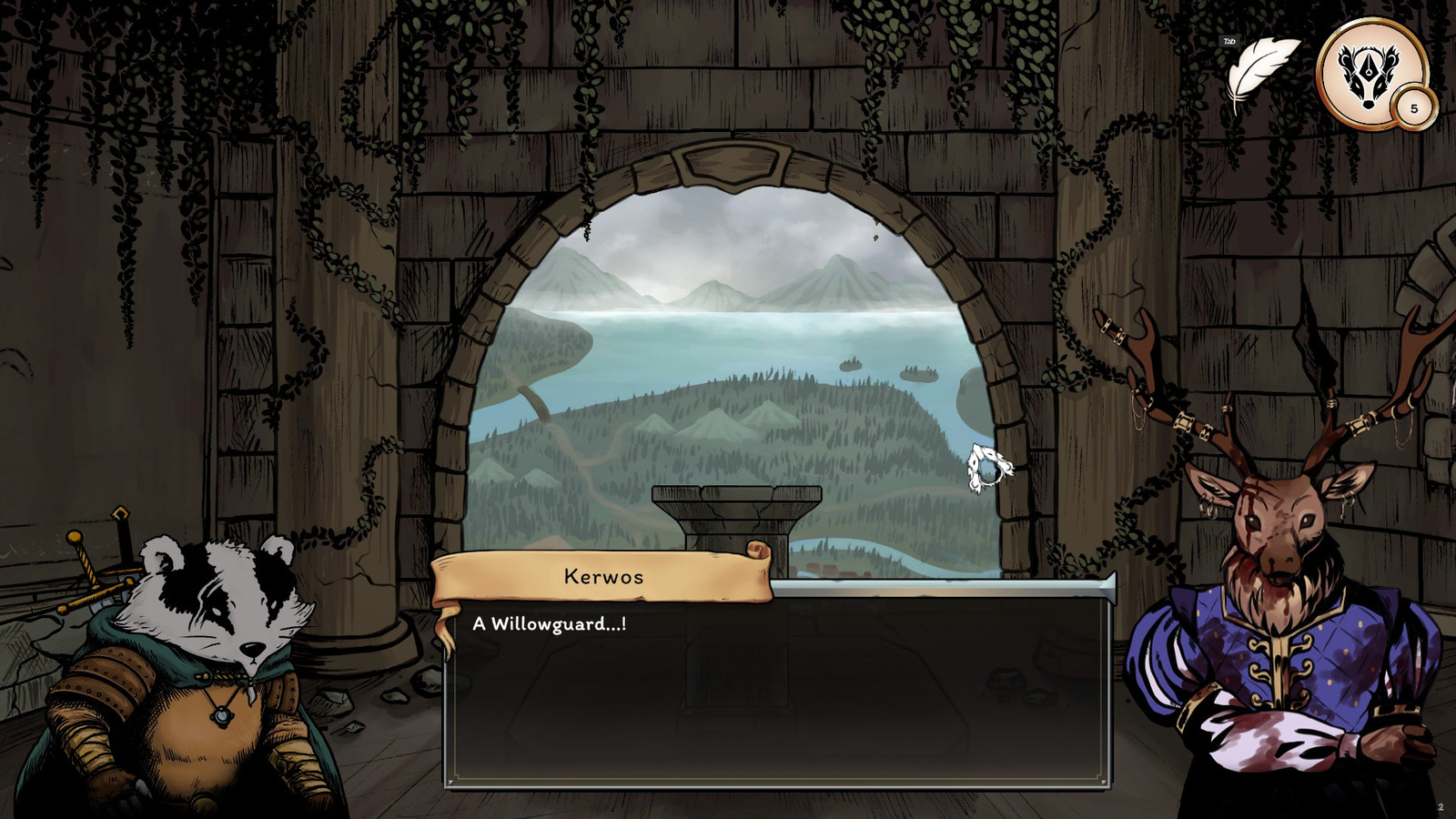
A Stranger in a Strange Land
In Willow Guard, you start as an outsider boated into the land to try and answer a call for help sent by a village leader that is suffering a devastating onslaught of monsters every few months. To try and help alleviate their burden, you’re tasked with finding out about why this is happening and how you can assist. To do this, you must put together the pieces yourself, asking around the various locales in the area. During the process, you’ll notate clues that are treated like items, allowing you to use what you’ve learned to further question previously called upon NPCs to potentially glean more light onto new subjects you discover. This isn’t a terribly new concept, but it’s one that few games use as deftly anymore. The game really trusts you with the responsibility to venture out and find the answers yourself. Additionally, finding these answers can reward you with valuable points, more clues, or even completely new locations to explore. It’s not just for a cute dialogue line or story beat. The entire narrative system employed within Willow Guard was one that allowed me to learn what I wanted at a steady pace, while also encouraging (or requiring) stepping into the combat-oriented sections of the game.
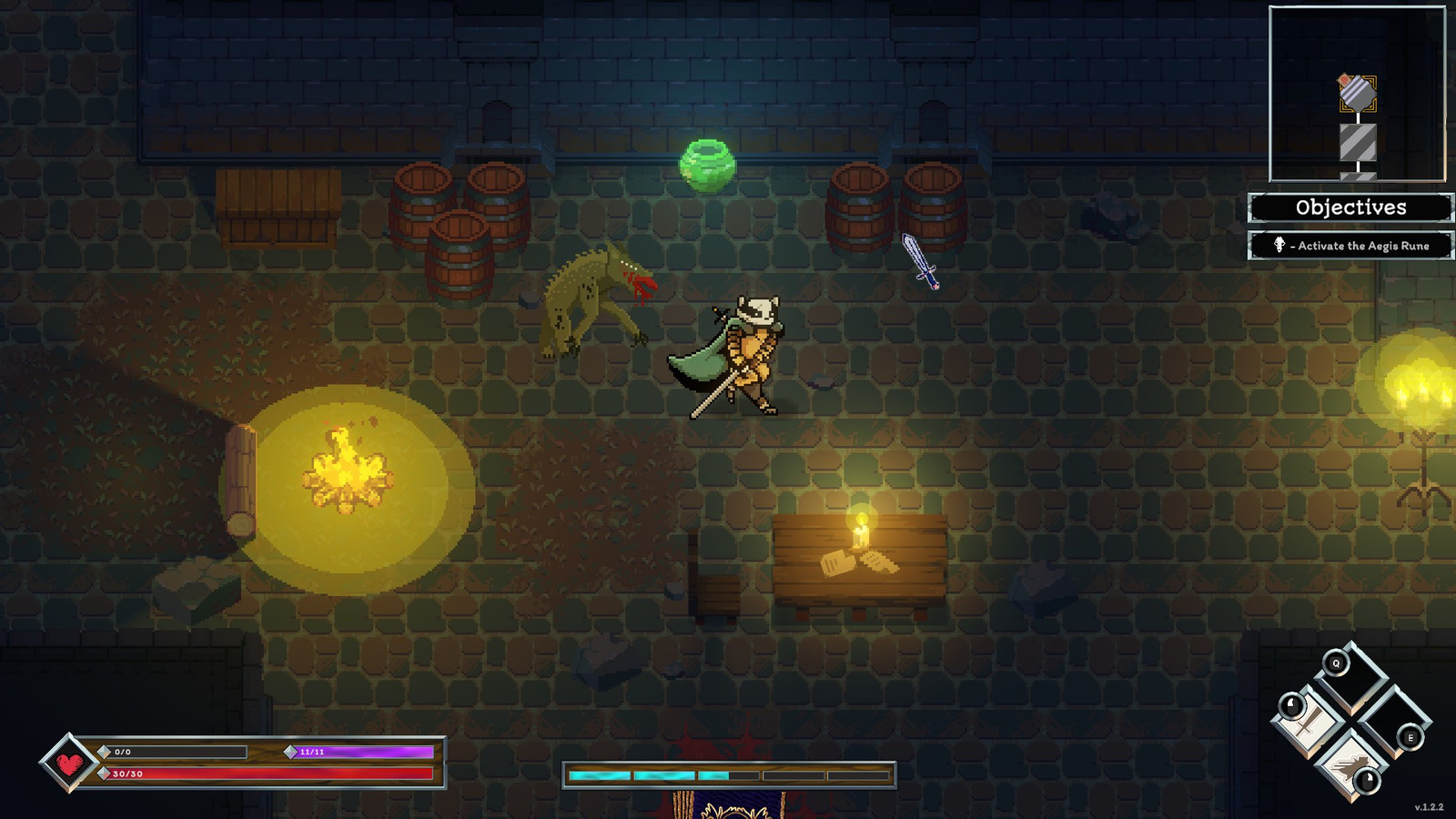
Card Fighting Combat
Which brings me to the actual combat gameplay within Willow Guard. It’s an isometric, action-based, deck-building amalgamation that allows you to customize how you take on dungeons by designating which skills, abilities, and buffs you’ll -potentially- draw as cards during your dungeon attempt. As you defeat enemies, break pots, pick up boosts, and basically anything else during combat, you’ll earn progress towards your next card draw from a pre-set deck that you construct before you enter a level/dungeon. When you earn that draw and decide to activate it, you’re presented with a choice of two of your cards (and as you play, some additional choices outside of your cards.) These cards are ones that you’ve earned or crafted during the story or before combat. They allow you to equip weapons, add buffs to your default sword swing or dodge dash, increase your health or armor, or a bevy of other choices to try and help you finish the combat encounter. This system helped encourage exploration of the level (along with breaking every single object or tree I could find) but also allowed for freedom of choice for when I wanted to activate my cards, and which type of attack or defense I needed to employ for the level’s enemies. Depending on how I felt in my grasp of the combat system, I could rely on my dodging and movement skills to use a more powerful attack setup with less defensive abilities, or decide to keep my chances of drawing a healing card high whilst knocking off health from the monsters at a more steady pace.
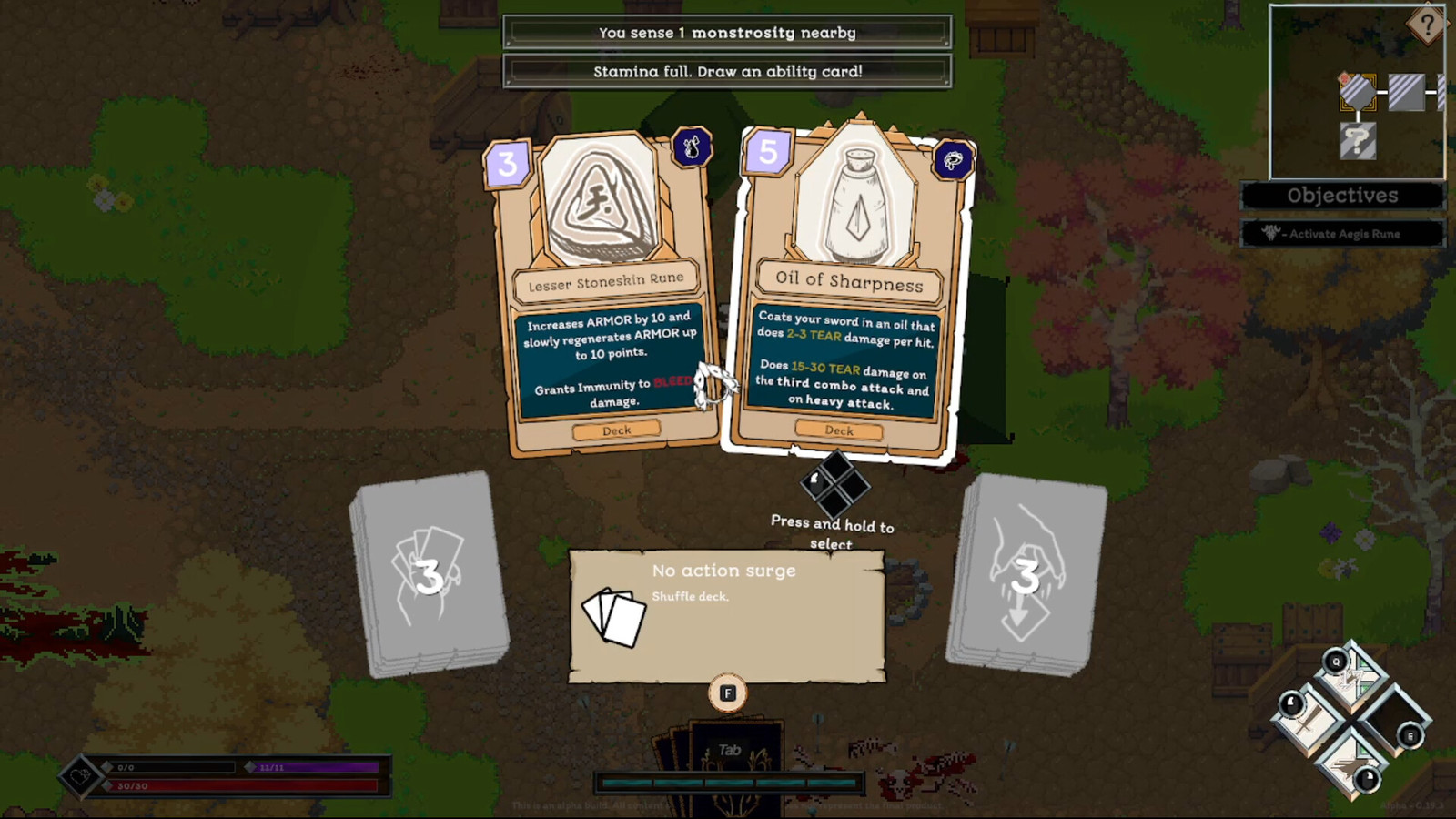
Combat felt precise and fair for the most part, and the more I played the more I figured out the little tricks and strategies required to avoid damage and even death. That’s not to say it’s completely forgiving, as I definitely had my fair share of deaths while playing the more difficult story encounters. But, they were never too long or taxing in my experience, and beating them felt rewarding. You can pick up valuable crafting materials during your combat runs, which are used to craft or upgrade cards. These upgrades are invaluable, as they are the only way to improve your combat effectiveness. There is no typical character upgrade system, and the cards you choose during combat are the main way to beat each level. There’s also an Inclination system that allows for a selection of helpful skills to choose from, but the cards you carry in your deck are your primary pieces of success. With how snappy the dungeons are to play through, and the ability to revisit previously defeated areas for the chance at brand new materials and events, each session I played Willow Guard was one that was really hard to pull myself away from. It was just plain fun.
Admirable Artistic Aims
All this talking and I haven’t even mentioned the graphical makeup of the game yet. Willow Guard is an illustrated feast for the eyes, with a unique art style that fits the story and setting perfectly. A little worn, a bit tarnished, but still holding a beauty all its own: just like the lands you pad through as Ghweros. The characters you meet within the story feel alive with the experiences of their past drawn into their expressions and outfits. Their dialogue is paired with changing faces and story point appropriate clothing, a major plus for narrative “visual novel” sections of games like this. Each new landmark, town, camp, forest, or land you visit feels hand-crafted to evoke the tone of the story that the developers intended to deliver. Whether dark and downtrodden, or homey and comfortable, the world is rustic and easy to enjoy. The art within combat levels is a bit less “artsy” and more functional, still managing to use splashes of visual spark with lighting and particle effects usefully employed to add flair and visual novelty.
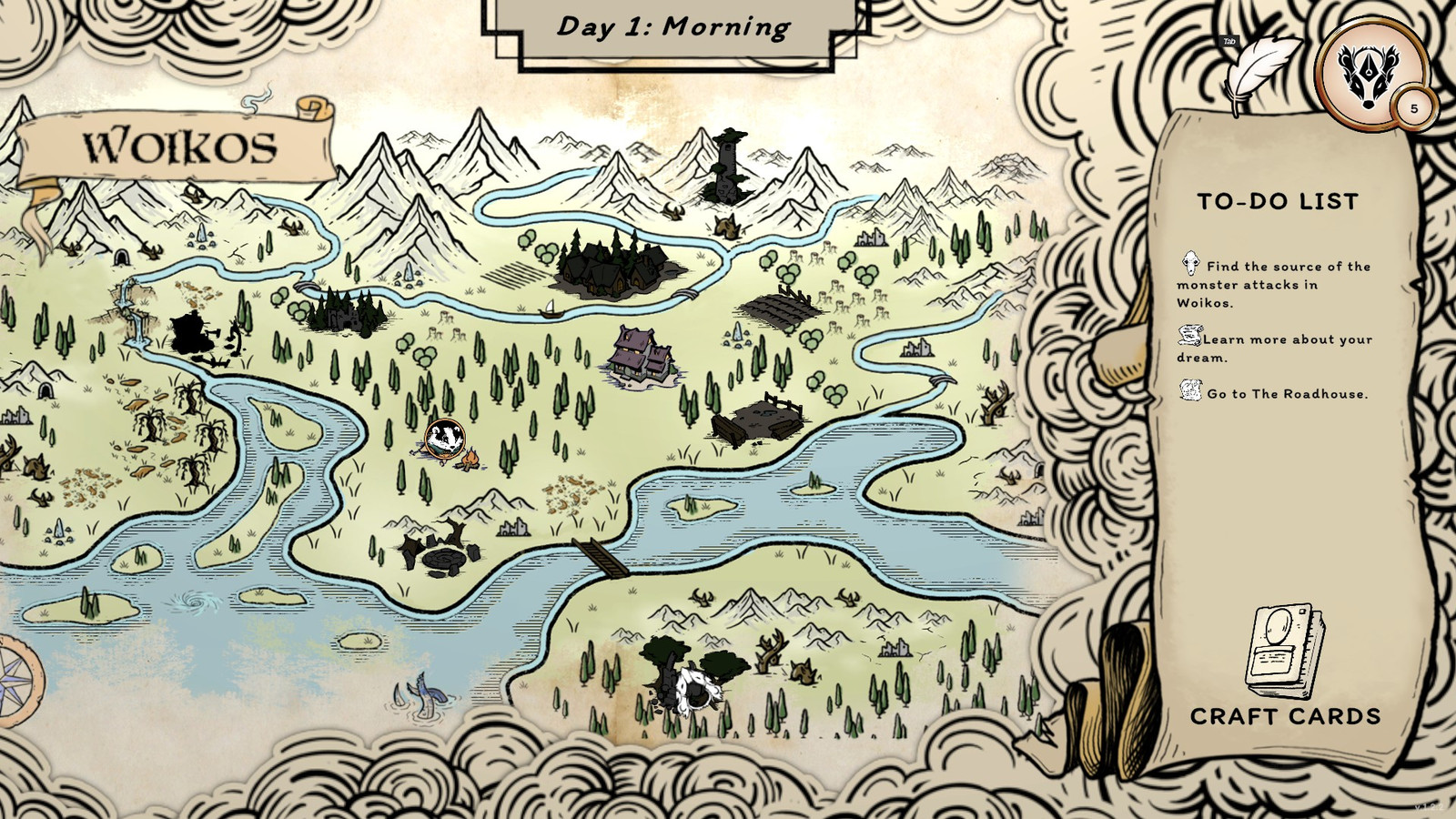
Additionally, the game employs a “Morning” and “Evening” system that switches up the feel of many locations depending on the time you visit them. This system also can determine which events and/or characters may show up during the story at certain points, as well as allowing for a refresh of combat scenarios and “Focus” points that are spent to perform main story actions, like asking about important clues or things you may notice in your surroundings. These points are also used for some crafting or upgrades, which makes it so that you can’t just grind endlessly and then bulldoze through the game. A max of 5 of these Focus points can be held at a time, which I felt was a good mechanic to control the flow of progress a bit, but still enabled user choice when it came with how to proceed.

Transported to Woikos and Beyond
A game like Willow Guard wouldn’t be complete without an appropriate soundscape to accompany it, and it delivers a well done set of occasion-specific music tracks layered with atmospheric location sound effects. Because there isn’t any voice acting, this means the sound needs to be a nice backdrop for storytelling, along with harmonizing with what’s on the screen during combat and conversations. Willow Guard manages to do this throughout, even if it does rely on some repeating background music. It mixes moments of silence, fades, and changes music within scenes to further tell the story, which is exactly what I’m looking for. High marks for audio, even if it’s not going to change the audio landscape of gaming.
In Conclusion
The developer MiTale’s motto is, “Games Where Stories Come First” and if Willow Guard is anything to go by, they’re nailing it. Venturing through the lands within Willow Guard, whether immersed in combat or conversation, is a novel and engaging experience that will leave you impressed and wanting more, even after the 10+ hour campaign. I can’t wait to see what other stories they tell.
